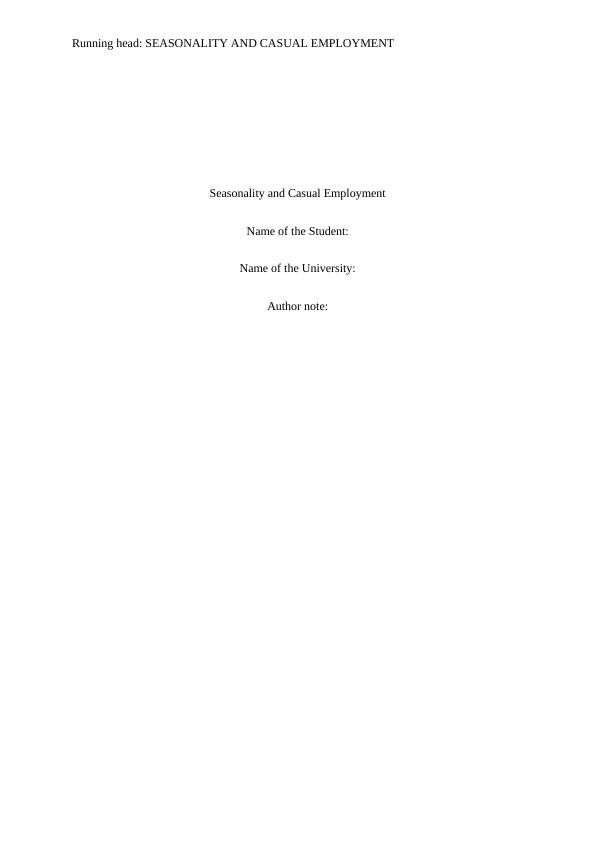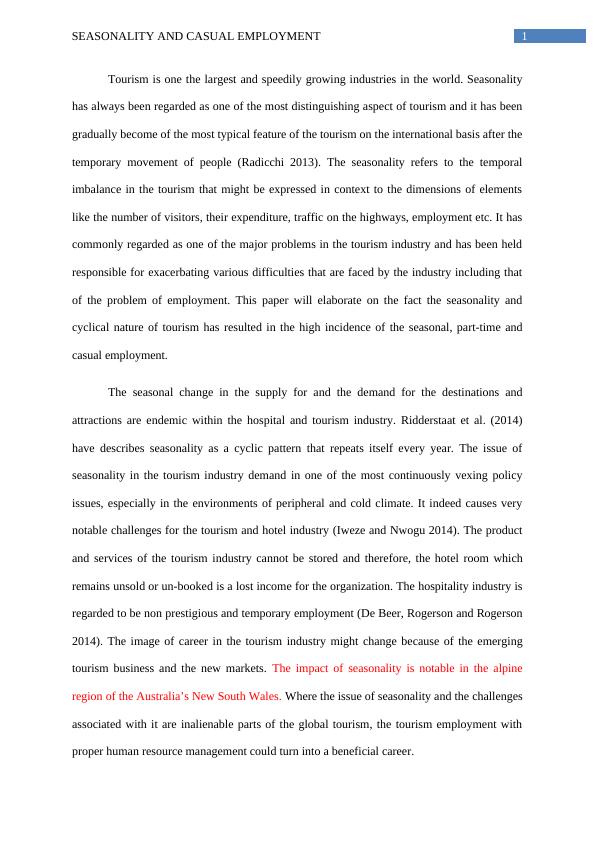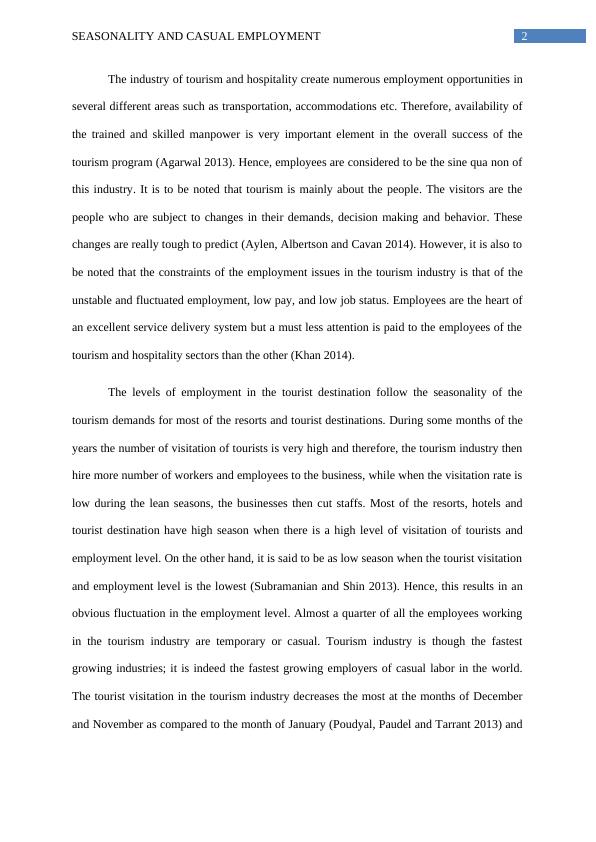Seasonality and Casual Employment in Tourism Industry
8 Pages1710 Words440 Views
Added on 2023-06-14
About This Document
This paper discusses the impact of seasonality and cyclical nature of tourism on the high incidence of seasonal, part-time and casual employment in the tourism industry. It also highlights the challenges faced by the workforce due to such temporary and casual employment level and the impact of seasonality on the contemporary tourism employment.
Seasonality and Casual Employment in Tourism Industry
Added on 2023-06-14
ShareRelated Documents
End of preview
Want to access all the pages? Upload your documents or become a member.
Impacts of Tourism Assignment PDF
|6
|1458
|119
Unemployment in Singapore: Microeconomic Concepts and Government Policies
|7
|1603
|441
Managing Environment for Tourism and Events
|16
|3934
|500
Types of Unemployment, Advantages and Disadvantages of Flexible and Fixed Exchange Rate Regime, Impact of Interest Rate on Currency
|5
|1192
|330
Tourism and Hospitality Management
|7
|1373
|65
Implementing Green Practices in Hotel AVANI: Benefits of ISO 14001 and EMAS
|9
|2523
|375



